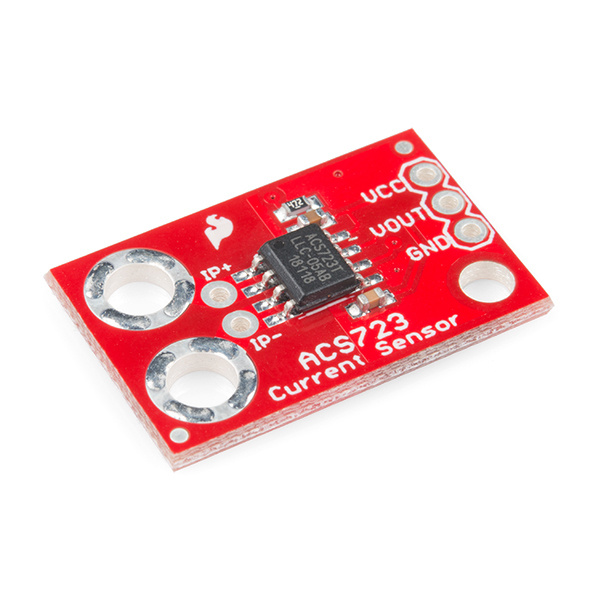Current Sensor Breakout (ACS723) Hookup Guide
Introduction
The ACS723 is a handy little current sensor from Allegro MicroSystems for low to moderate current sensing applications. SparkFun offers two flavors of breakout board, one with just the sensor and another with an on-board amplifier to increase the sensitivity.
The ACS723 sensor uses a Hall effect sensor to output a voltage relative to the current flowing through the IP+ and IP- pins. The advantage of using a Hall effect sensor is that the circuit being sensed and the circuit reading the sensor are electrically isolated. This means that, although your Arduino is running on 5V, the sensed circuit can be operating at higher DC or AC voltages!
The amplified breakout board (Low Current) is capable of sensing very small currents down to around 10mA and large currents up to 5A! However, since the output is analog, your usable readings will be limited by noise and the resolution of the ADC reading the output. This sensor is not recommended for current sensing lower than 10's of milliamps.
Required Materials
Depending on the equipment available to you, you will need some of the following items to follow along with this hookup guide:
Suggested Reading
Here are some topics related to this hookup guide you may want to review:
Voltage, Current, Resistance, and Ohm's Law
How to Power a Project
Electric Power
Series and Parallel Circuits
Alternating Current (AC) vs. Direct Current (DC)
How to Use a Multimeter
There's also a great tutorial from Shawn Hymel explaining electromagnetism and magnets:

